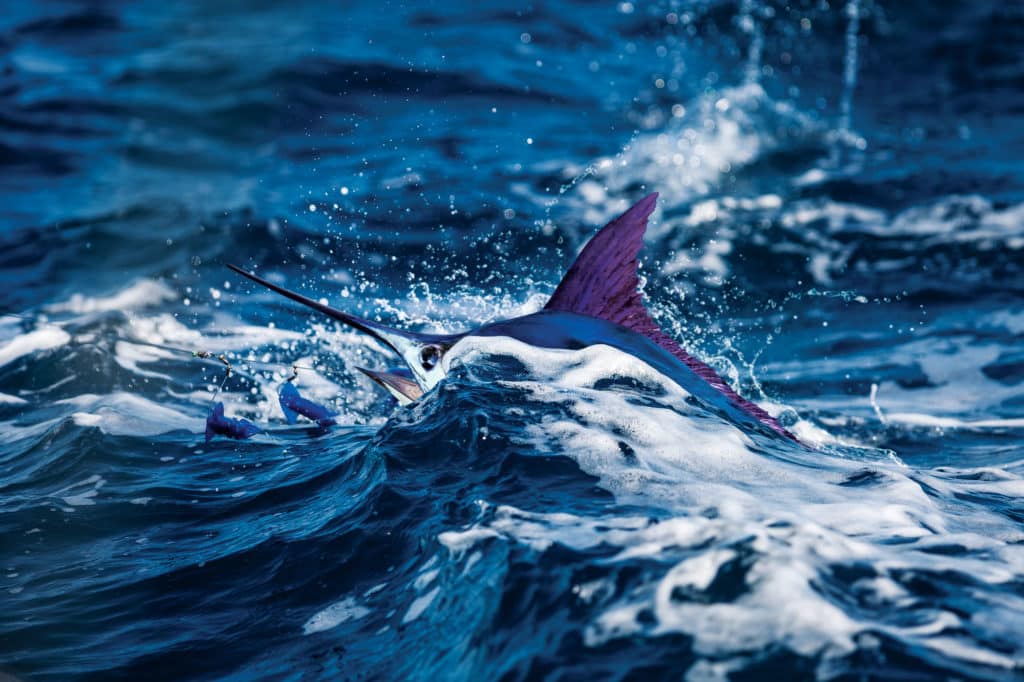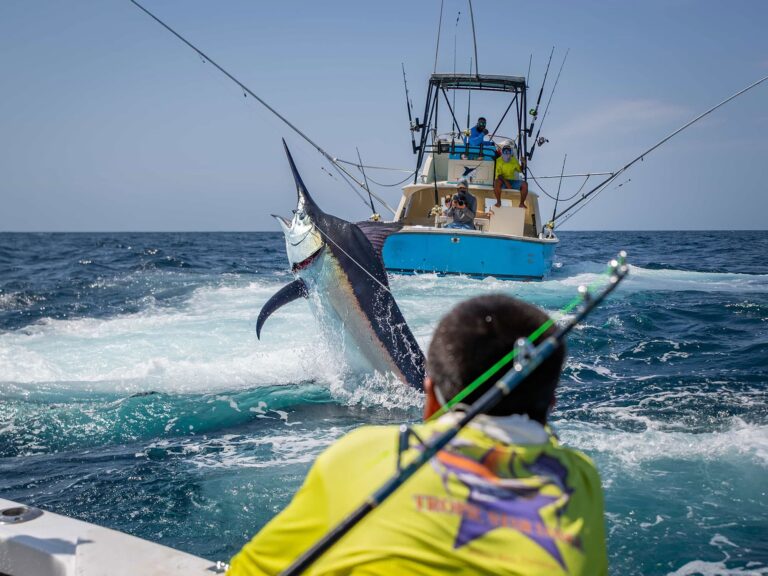
Fishing for Mid-Atlantic Billfish
Adapt your style to meet the demands of the billfish season.
Brute strength, speed, stamina and a flair for acrobatics make marlin highly coveted targets of offshore anglers.

Adapt your style to meet the demands of the billfish season.

Panama’s hidden gem offers world-class pursuits with a unique flair.

Anglers and scientists join forces to gain valuable info on billfish.

Panama’s hidden gem offers world-class pursuits with a unique flair.
Brute strength, speed, stamina and a flair for acrobatics make marlin highly coveted targets of offshore anglers. Of course, marlin aren’t all one same billfish species, but five highly migratory pelagics: Atlantic blue marlin, which can weigh upwards of 1,500 pounds, and occur in the warmer waters of the Atlantic Ocean, Gulf of Mexico, and the Caribbean and Mediterranean seas; Pacific blue marlin, which attain similar size and are found in tropical, temperate regions of the Pacific and Indian oceans; Black marlin, another species that achieves grander status (weighing 1,000 pounds or more) and are found in warm, tropical stretches of the Pacific and Indian oceans, often closer to shore than blues; Striped marlin, which seldom weigh as much as 400 pounds, also roam the tropical expanses of the Pacific and Indian oceans, and are known to come nearshore in pursuit of schooling baitfish; and white marlin, the smallest of the five species, which rarely exceed 100 pounds, and occur in many of the same areas where Atlantic blues thrive.
Blues and blacks prey on various members of the tuna and mackerel families, as well as dolphin, squid, flying fish and more. Striped marlin favor mackerel, sardines, anchovies, sauries, caballitos (goggle-eyes), and squid. The smaller whites opt for whatever prey are most readily available, and are known to strike a wide range of baits, including ballyhoo, mullet, mackerel, herring, flying fish, squid and others.